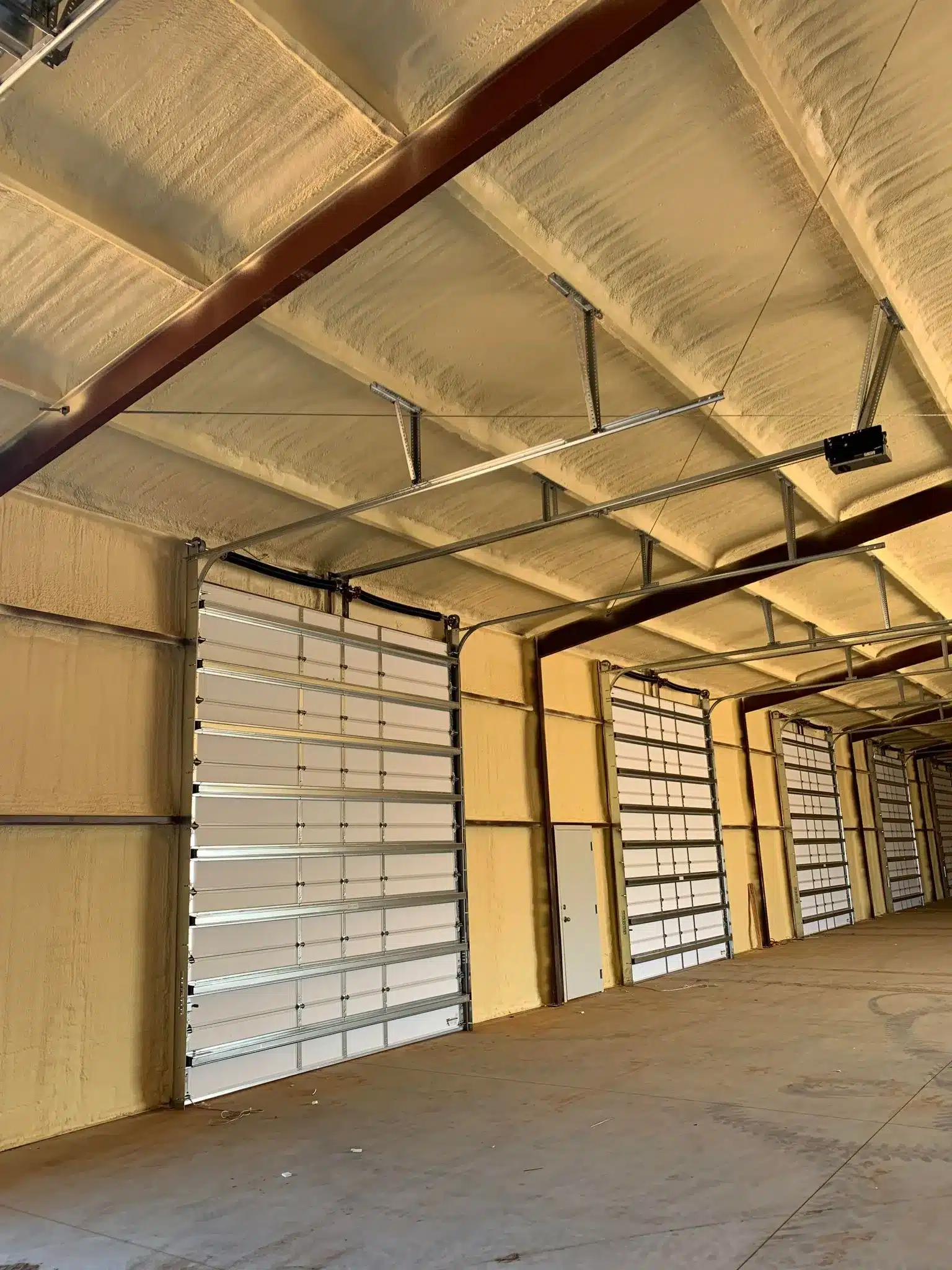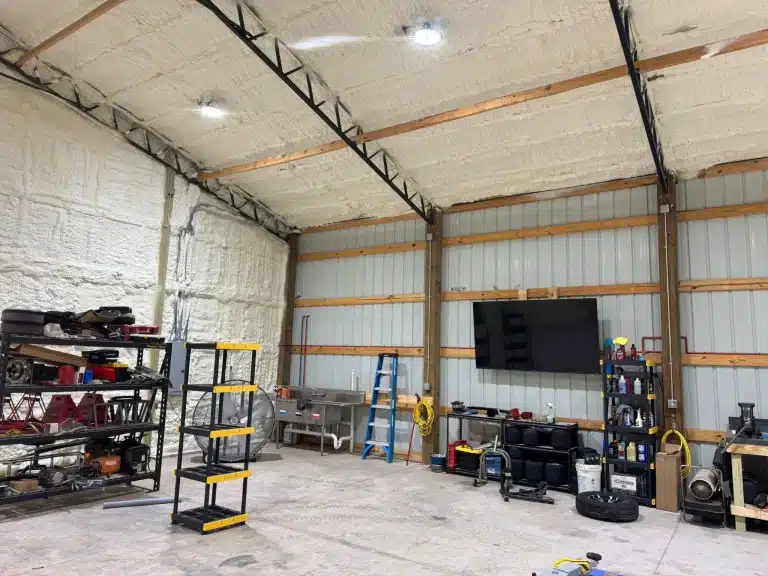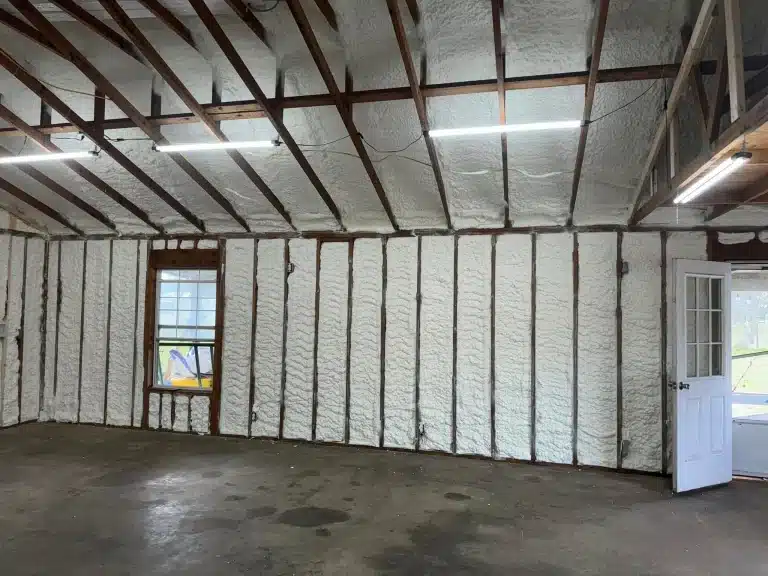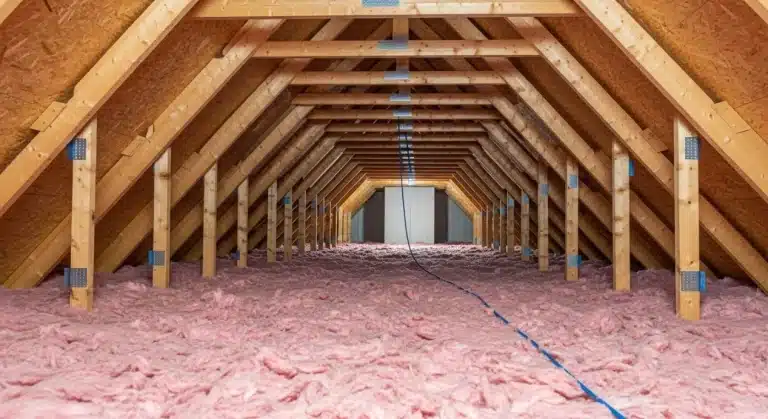Spray foam insulation keeps rooms cooler in the summer primarily by creating a complete air barrier. Unlike traditional insulation types that simply slow down heat transfer, spray foam expands to fill every crack and crevice, effectively sealing the building envelope. This air seal stops hot, humid outdoor air from infiltrating the home and prevents expensive, conditioned indoor air from escaping. This process directly combats convective heat gain, which is a major source of heat in residential structures.
This article explains the mechanics behind how spray foam works to maintain a cooler, more comfortable home during hot weather. Understanding this can help you make an informed decision about your home’s thermal performance based on clear, practical information about insulation performance in different home environments.
The Science of Summer Heat Gain
Heat always moves from a warmer area to a cooler one, and it does so in three ways. In the summer, your home fights a constant battle against this transfer from the hot outdoors to your cooler interior.
- Conduction: This is heat transfer through direct contact. Heat from the sun warms your roof shingles, which then conduct heat through the plywood, rafters, and eventually into your attic and living space.
- Convection: This is heat transfer through the movement of fluids, like air. Gaps around windows, doors, and plumbing penetrations allow hot outdoor air to move inside, a process known as air infiltration.
- Radiation: This is heat transfer through electromagnetic waves. The sun radiates heat onto your roof and walls, warming the surfaces without direct contact. This heat then radiates downward into your home.
An effective insulation strategy must address all three forms of heat transfer to keep a home cool.
How Spray Foam Counteracts Heat Gain
Spray foam insulation is uniquely equipped to manage all three heat transfer methods, but its biggest advantage in summer is its ability to stop air movement.
Creating an Airtight Seal
The most significant way heat enters a home in the summer is through air leakage. A study from the U.S. Department of Energy explains that air leaks can waste a substantial amount of energy. When spray foam is applied, it expands up to 100 times its original size, sealing gaps that other insulation types can’t. This monolithic barrier stops hot air convection currents dead in their tracks, which also helps reduce the amount of humidity entering the home.
Bonus Tip: In humid climates, controlling moisture is just as important as controlling temperature. Closed-cell spray foam acts as a vapor barrier, preventing humid air from entering the wall cavity and leading to mold or structural issues.
Resisting Conductive Heat Flow
Spray foam also has a high thermal resistance, or R-value, which measures its ability to stop conductive heat transfer. The higher the R-value, the better the insulation. Information from the U.S. Department of Energy shows that spray foam provides one of the highest R-values per inch available. This means less heat from your sun-baked roof and walls will conduct its way into your living space.
Comparing Insulation Materials
Not all insulation performs the same, especially when it comes to summer cooling. Here’s a look at how spray foam stacks up against more traditional options.
| Feature | Closed-Cell Spray Foam | Open-Cell Spray Foam | Fiberglass Batts | Blown-In Cellulose |
|---|---|---|---|---|
| Typical R-Value per Inch | 6.0 – 7.0 | 3.5 – 3.8 | 3.1 – 3.8 | 3.2 – 3.8 |
| Air Sealing Ability | Excellent (Forms a complete air barrier) | Excellent (Forms a complete air barrier) | Poor (Allows air movement) | Fair (Settles over time, creating gaps) |
| Moisture Resistance | Excellent (Acts as a vapor barrier) | Fair (Permeable to moisture) | Poor (Can hold moisture and sag) | Poor (Can hold moisture and compact) |
This data shows that while R-values may seem comparable in some cases, the air-sealing capability of spray foam gives it a significant performance advantage.
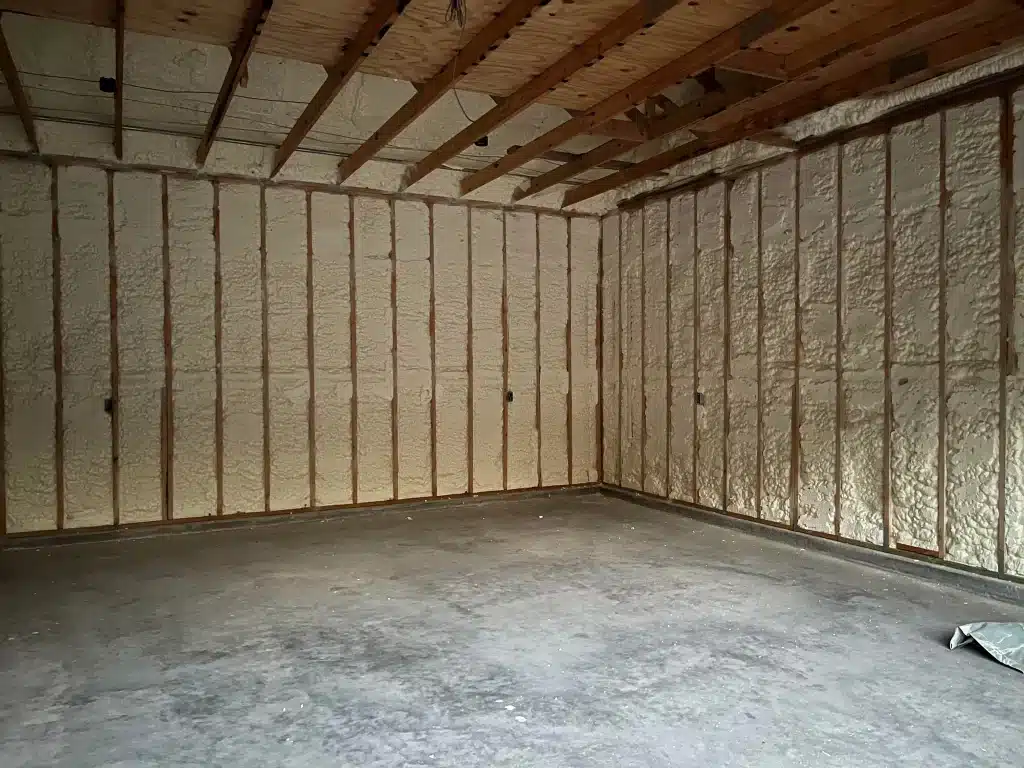
Less Stress on Your Cooling System
When your home is properly sealed and insulated with spray foam, your air conditioner doesn’t have to work nearly as hard. The system can reach the desired temperature more quickly and will cycle on less frequently to maintain it. This has two major benefits:
- Lower Energy Bills: Reduced HVAC runtime directly translates to lower electricity consumption during the peak cooling season.
- Longer Equipment Lifespan: Less constant operation reduces wear and tear on your air conditioner’s compressor and other components, potentially extending its service life.
The growing adoption of materials like spray foam reflects a broader trend toward more energy-efficient building practices. Market analysis from Grand View Research points to increasing consumer demand for solutions that lower long-term energy costs.
Things to Consider Before Making a Decision
Before you decide on spray foam insulation, it’s a good idea to evaluate a few key factors.
- Your Home’s Structure: Is it a new build or an existing home? Retrofitting spray foam into finished walls is more complex than installing it in open stud bays. Attics and crawl spaces, however, are almost always accessible.
- Climate Demands: If you live in a hot, humid region like the Southeast, the moisture-blocking properties of closed-cell foam are a huge asset. In drier climates, open-cell foam can be a very effective and more budget-friendly option.
- Ventilation Needs: Making a home more airtight means you must ensure it has adequate mechanical ventilation. A balanced system, like a Heat Recovery Ventilator (HRV) or Energy Recovery Ventilator (ERV), might be needed to maintain healthy indoor air quality.
- Professional Application: Spray foam insulation is a chemical product that must be mixed and applied by certified professionals. Proper installation is essential for both performance and safety.
Bonus Tip: When insulating an attic, consider applying spray foam to the underside of the roof deck instead of the attic floor. This creates a “conditioned attic,” moving the building’s thermal boundary to the roofline and preventing the attic from becoming a radiant heat source that warms the rooms below.
Final Thoughts
Spray foam insulation offers a powerful solution for keeping homes cooler in the summer by tackling heat gain at its source. Its ability to create a near-perfect air seal is what sets it apart from other materials, directly stopping the hot air infiltration that forces your AC to work overtime. By resisting both convective and conductive heat, it stabilizes your indoor temperature and reduces energy consumption. Before moving forward, evaluate your home’s specific needs, your regional climate, and your long-term efficiency goals.
Get a Professional Assessment
The next step is to understand how these principles apply to your specific property. A professional evaluation can identify critical areas of heat gain and air leakage. For a detailed consultation, you can contact Prestige Insulation Solutions LLC by phone at (850) 429-4969 or by email at [email protected] to discuss your home’s insulation needs.
Sources
- U.S. Department of Energy – Provides official government information on the benefits of air sealing for energy conservation in homes.
- U.S. Department of Energy – Offers comprehensive data on different insulation types, R-values, and installation best practices.
- Grand View Research – An industry report detailing the market trends and growth factors for spray foam insulation, highlighting its role in energy efficiency.
FAQS
How does spray foam handle humidity?
Closed-cell spray foam is an excellent moisture barrier. It is non-porous and will not absorb water, helping to keep humid summer air from entering the wall assembly. Open-cell foam is vapor-permeable, meaning it will allow water vapor to pass through it, so its use depends on the specific climate and building design.
Will spray foam insulation make my house too airtight?
It will make your house very airtight, which is the goal for energy efficiency. Modern building science recommends creating a tight building envelope and then using mechanical systems to control ventilation. This ensures a steady supply of fresh air while still controlling energy loss.
What is the lifespan of spray foam insulation?
Spray foam is a rigid, inert polymer that does not sag, settle, or decompose over time. When installed correctly, it should last for the life of the building.
Can spray foam be applied to basement walls to help with cooling?
Absolutely. Insulating basement walls can help keep the space cooler in the summer by preventing ground heat from transferring indoors. It also helps manage moisture, making the basement more comfortable year-round.


